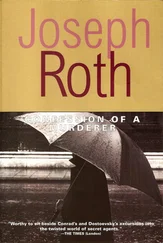Jose Somoza - Art of Murder
Здесь есть возможность читать онлайн «Jose Somoza - Art of Murder» весь текст электронной книги совершенно бесплатно (целиком полную версию без сокращений). В некоторых случаях можно слушать аудио, скачать через торрент в формате fb2 и присутствует краткое содержание. Жанр: Триллер, на английском языке. Описание произведения, (предисловие) а так же отзывы посетителей доступны на портале библиотеки ЛибКат.
- Название:Art of Murder
- Автор:
- Жанр:
- Год:неизвестен
- ISBN:нет данных
- Рейтинг книги:4 / 5. Голосов: 1
-
Избранное:Добавить в избранное
- Отзывы:
-
Ваша оценка:
- 80
- 1
- 2
- 3
- 4
- 5
Art of Murder: краткое содержание, описание и аннотация
Предлагаем к чтению аннотацию, описание, краткое содержание или предисловие (зависит от того, что написал сам автор книги «Art of Murder»). Если вы не нашли необходимую информацию о книге — напишите в комментариях, мы постараемся отыскать её.
Art of Murder — читать онлайн бесплатно полную книгу (весь текст) целиком
Ниже представлен текст книги, разбитый по страницам. Система сохранения места последней прочитанной страницы, позволяет с удобством читать онлайн бесплатно книгу «Art of Murder», без необходимости каждый раз заново искать на чём Вы остановились. Поставьте закладку, и сможете в любой момент перейти на страницу, на которой закончили чтение.
Интервал:
Закладка:
That had been the idea behind all the sketches they had made of her, Gerardo explained: her mahogany hair, her nakedness, the spying on her at night, the way the two of them had preyed on her and insulted her. That was the basis of the hyperdramatism.
'The sketch is finished,' said Gerardo. 'Now we have to put the finishing touches to the painting. From now on we'll delineate your pose and the colour of your body, and fix your hyperdramatic expressions. The work will still be hard, I warn you, but the worst is over.' He sounded very relieved. 'Then we'll place lamps to illuminate you with light and shade, and put you in the spot the work has been allotted in the Tunnel.' He paused, then asked with a smile, 'How do you feel after the storm?' 'Fine,' she said. And burst into tears.
She felt a thin, strange wetness course down her cheeks. It was such a strange sensation that at first she did not realise what it was. As she moved into Gerardo's arms for protection, she discovered that, for the first time since she had been primed, she was crying real tears.
3
The woman striding purposefully towards the house has short hair, is very slender and is wearing expensive casual clothes: jerkin, blouse, tight jeans and boots; she has sunglasses on, and is carrying a small bag in her left hand. Her determined manner seems out of place in this peaceful scene. On both sides of the gravel path she is walking along, there is a perfectly trimmed lawn, the precise shadow of a line of trees and a hedge separating the garden from a meadow where several skewbald ponies can be seen. Further off, the landscape is one of gentle hills, carpets of tufted grass, with darker clumps of bushes and woods, the endless luxuriant reaches of Dartmoor in the southwest of England. The afternoon is drawing to a close, and the sun is dipping to the horizon to the left of the woman. The house she is headed towards has two wings: the main part is long, with two chimneys and eight windows; the second, perpendicular to the first, is not as grand. A maid in impeccable uniform is waiting at the front door. She is plump and has waxy white skin. She smiles as the woman approaches, but her smile is not reciprocated. A virtuoso bird, of a kind that would no doubt intrigue an ornithologist, is singing somewhere.
'Good evening, miss. Please, come in.'
The pleasant, ruddy-cheeked maid had a Welsh accent. Although Miss Wood did not reply, this did not seem to perturb her in the slightest. The house was comfortable and spacious, with a smell of noble woods.
'Be so kind as to wait here, miss. The master will attend you immediately.'
She was in an immense living room; three semicircular stone steps led down into it. Wood stepped down them very slowly, as though she were taking part in a spectacle. Her Ferragamo boots resounded on the stone. At first she considered taking off her sunglasses, but then the glinting glass wall at the far end of the room made her change her mind. Her Dior glasses matched her short hair with its cinnamon highlights. Her beauty adviser in the New Bond Street salon had suggested she wear sports clothes in brown and cream. Wood chose a fine cotton jerkin, a collarless blouse with ribbons and tight jeans. To go with this, she had a small, light, many-sided bag: it was as if the fingers of her left hand were holding nothing.
She cast a quick glance around her while she stood waiting. Sober, spacious, comfortable and rustic was her verdict. 'He has more money, but his tastes haven't changed,' she thought. Big native rugs, a three-piece suite in neutral colours, a huge chimney-piece and a glass wall at the far end, with a double door leading out into a kind of magnificent garden of paradise. There were only two works of art in the room: one next to the far doors, the other close to the right-hand wall, beyond the enormous rug. The latter was a blond young man of around twenty. He was naked, and shielded his genitals with both hands. He had not been painted, only lightly primed. He was openly breathing, blinked frequently, and followed Miss Wood's movements closely. It was as though he was not a painting, but a perfectly normal and attractive boy, standing naked in the room. He was called Portrait of Joe, and was by Gabriel Moritz. Moritz was one of the French natural-humanist school.
Wood knew all about them. Natural-humanism rejected any attempt to turn a person into art, and so was utterly opposed to pure hyperdramatism. To the humanists, works of art were first and foremost human beings. Their models did not have their bodies painted and were put on show exactly as they were in daily life, naked or dressed, posing almost without taking up quiescence.
The natural-humanists were also determined not to hide any of the body's blemishes: Wood could see the scar from what must have been a childhood scrape on Portrait of Joe's right knee, and the curl of a distant appendix operation. The boy seemed a little bored with being on show. While Miss Wood was looking at him, he cleared his throat, puffed out his chest, and ran his tongue over his lips.
The other work was better, but was from the same tendency. Wood already knew it, and had no need to go closer and read its title: Girl in the Shade by Georges Chalboux. The body of Girl in the Shade was less appealing than the Moritz. It looked like a university student who had decided to play a joke on its friends by taking all its clothes off and standing still.
The stands by the side of the two works displayed all the accoutrements for maintaining humanist paintings: small trays with bottles of water and wafer biscuits that the works were allowed to turn to whenever they liked, signs they could hang on the wall to say that the painting had gone for a rest or was absent for a while, even one which said: 'These people are working as a work of art. Please respect them.'
Miss Wood finished studying the works and swung her tiny bag from side to side as she walked round the room. She detested French humanist art in all its forms: from Corbett's 'sincerism' to the 'democratism' of Gerard Garcet and the 'absolute liberalism' of
Jacqueline Treviso. Works that asked permission to go to the bathroom or simply went without asking, outdoor pieces which ran for cover when it started raining, paintings which haggled over how many hours they should work, and even the poses they should adopt, who butted in to your conversations with other people, who had the right to complain if they were upset about something or to share your food if they saw you eating something they fancied. April Wood definitely preferred pure hyperdramatism.
She heard a noise and turned round. Hirum Oslo was coming up the garden path, limping and leaning on his stick. He was wearing cream-coloured trousers and jersey, with a red Arrows shirt. He was a tall, good-looking man. His dark skin seemed at odds with pronounced Anglo-Saxon features inherited from his father. He had short black hair, brushed back off his forehead, where his eyebrows were thick and expressive. Wood found him the same as ever, perhaps a little thinner, with large sad eyes that he got from his Indian mother. She knew he was forty-five, but he looked more like fifty. He was a concerned man, alert to everything going on around him, anxious to find someone with problems to whom he could lend a helping hand. Miss Wood thought it was this outpouring of solidarity that aged him: it was as if part of his good looks had been rubbed off on others.
She walked to the glass doors to greet him. Oslo smiled at her, but first of all stopped to have a word with the Chalboux work.
'Cristine, you can take a rest whenever you like,' he said to her in French.
'Thank you,' the painting smiled, nodding her head. It was only then that Oslo turned to greet Miss Wood. 'Good afternoon, April.'
'Good afternoon, Hirum. Could we talk without the works of art?' 'Of course, let's go to my office.'
Читать дальшеИнтервал:
Закладка:
Похожие книги на «Art of Murder»
Представляем Вашему вниманию похожие книги на «Art of Murder» списком для выбора. Мы отобрали схожую по названию и смыслу литературу в надежде предоставить читателям больше вариантов отыскать новые, интересные, ещё непрочитанные произведения.
Обсуждение, отзывы о книге «Art of Murder» и просто собственные мнения читателей. Оставьте ваши комментарии, напишите, что Вы думаете о произведении, его смысле или главных героях. Укажите что конкретно понравилось, а что нет, и почему Вы так считаете.












